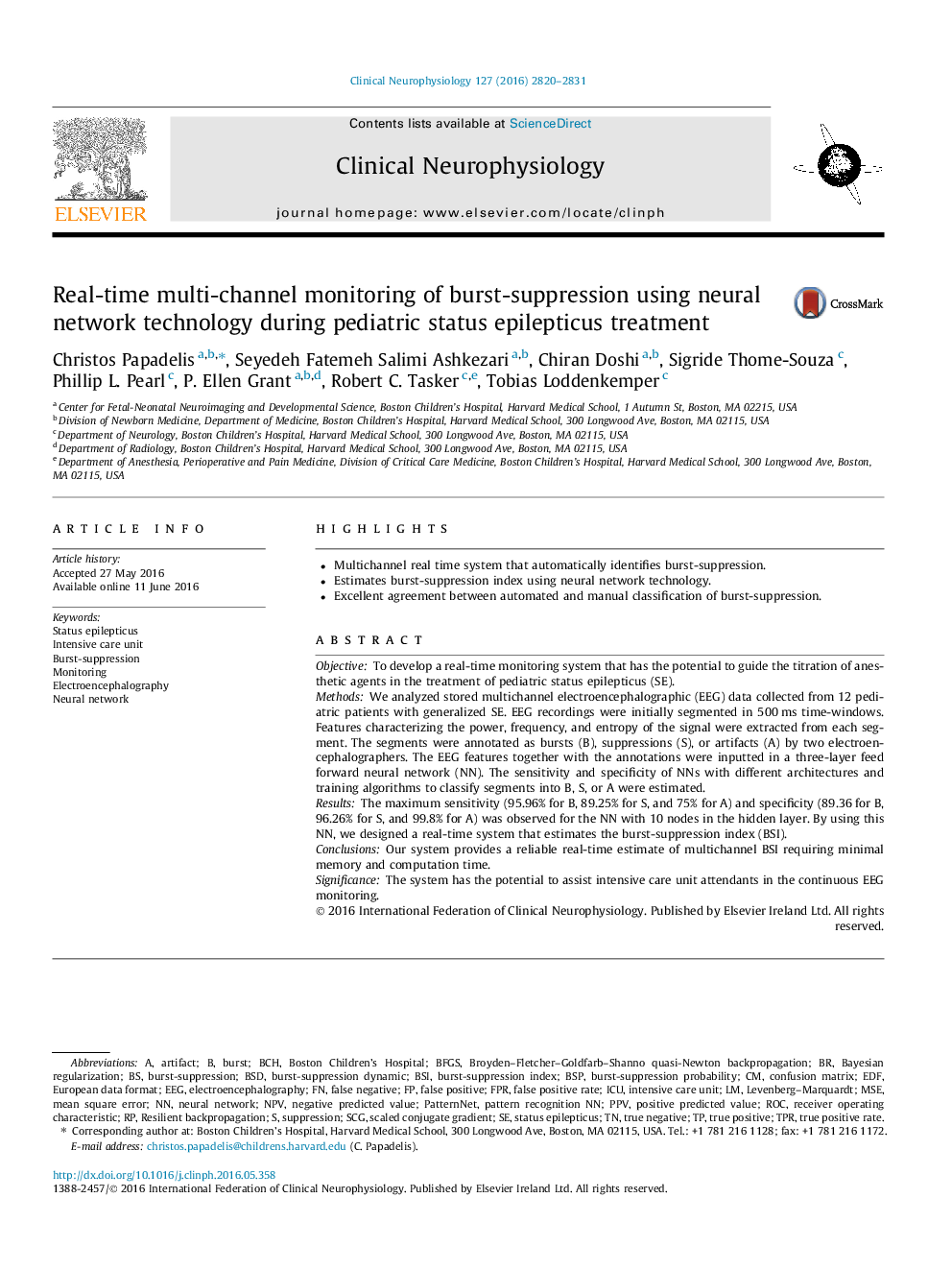| Article ID | Journal | Published Year | Pages | File Type |
|---|---|---|---|---|
| 3042674 | Clinical Neurophysiology | 2016 | 12 Pages |
•Multichannel real time system that automatically identifies burst-suppression.•Estimates burst-suppression index using neural network technology.•Excellent agreement between automated and manual classification of burst-suppression.
ObjectiveTo develop a real-time monitoring system that has the potential to guide the titration of anesthetic agents in the treatment of pediatric status epilepticus (SE).MethodsWe analyzed stored multichannel electroencephalographic (EEG) data collected from 12 pediatric patients with generalized SE. EEG recordings were initially segmented in 500 ms time-windows. Features characterizing the power, frequency, and entropy of the signal were extracted from each segment. The segments were annotated as bursts (B), suppressions (S), or artifacts (A) by two electroencephalographers. The EEG features together with the annotations were inputted in a three-layer feed forward neural network (NN). The sensitivity and specificity of NNs with different architectures and training algorithms to classify segments into B, S, or A were estimated.ResultsThe maximum sensitivity (95.96% for B, 89.25% for S, and 75% for A) and specificity (89.36 for B, 96.26% for S, and 99.8% for A) was observed for the NN with 10 nodes in the hidden layer. By using this NN, we designed a real-time system that estimates the burst-suppression index (BSI).ConclusionsOur system provides a reliable real-time estimate of multichannel BSI requiring minimal memory and computation time.SignificanceThe system has the potential to assist intensive care unit attendants in the continuous EEG monitoring.
